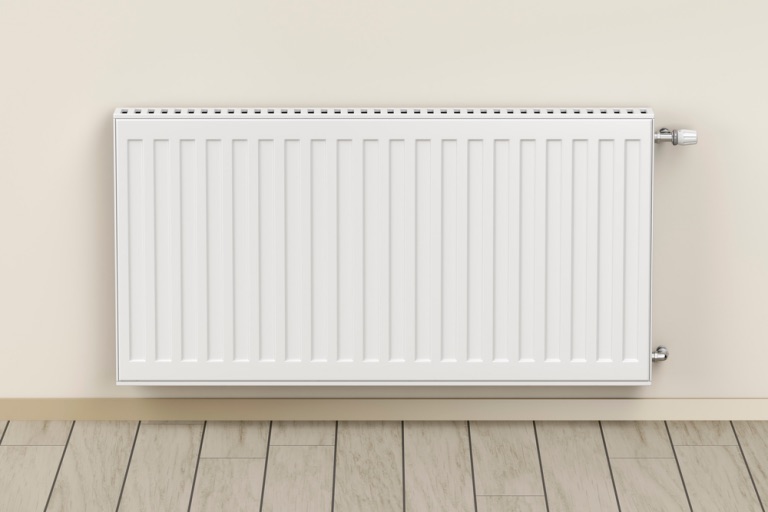In the realm of home heating solutions, single panel radiators have gained popularity for their efficiency, space-saving design, and aesthetic appeal. If you’re considering upgrading your home’s heating system with single panel radiators, this guide will walk you through everything you need to know about installation and maintenance.
Understanding Single Panel Radiators
Single panel radiators are sleek, compact heating units designed to efficiently radiate heat into a room. Unlike traditional radiators with multiple panels, these units have a single panel through which hot water flows, heating the surrounding air.
Their minimalist design not only enhances room aesthetics but also maximizes usable space, making them ideal for modern homes where every square meter counts. You can view a broad collection of single panel radiators at Mr Central Heating.
Preparing for Installation
Before you begin installing single panel radiators, gather the necessary tools and materials. You’ll typically need a spirit level, drill, screws, radiator brackets, pipe fittings, and a radiator bleed key.
It’s also essential to ensure safety by turning off the heating system and allowing radiators to cool before handling them. If you’re unsure about any aspect of the installation process, consider consulting a professional plumber or heating engineer.
Step-by-Step Installation Guide
Positioning the Radiator: Decide on the optimal location for your single panel radiator, considering factors like heat distribution and room layout. Mounting the radiator under windows is often recommended to counteract heat loss and maximize efficiency.
Attaching Brackets: Use a spirit level to ensure the brackets are level and secure. Drill pilot holes for screws, then attach the brackets to the wall. Double-check alignment before tightening screws to avoid any adjustments later.
Connecting to the Heating System: Once brackets are secure, connect the radiator to the existing pipework. Use appropriate pipe fittings and ensure all connections are tightly sealed to prevent leaks. Follow manufacturer guidelines for pipe layout and connection specifics.
Filling and Bleeding: After installation, refill the heating system with water and check for any leaks around connections. Bleed the radiator using a radiator bleed key to release trapped air, ensuring optimal heating efficiency.
Common Installation Challenges and Solutions
During installation, you may encounter challenges such as uneven walls or existing pipework that doesn’t align perfectly with the radiator. To address these issues, use shims or adjustable brackets to level the radiator. For mismatched pipework, consider using flexible connectors or seeking professional advice to ensure a proper fit and functionality.
Maintenance Tips for Single Panel Radiators
Maintaining single panel radiators is essential to ensure they operate efficiently and have a long lifespan. Regularly inspect the radiator for signs of leaks, corrosion, or trapped air. Clean the exterior surfaces with a damp cloth to remove dust and maintain its appearance. Periodically check and adjust the radiator valves to balance the heat distribution throughout your home.
Bleeding and Balancing Radiators
Bleeding your single panel radiators is crucial for removing trapped air, which can affect heating efficiency. Use a radiator bleed key to open the valve at the top of the radiator and release any air.
Start from the radiators on the ground floor and work your way up to ensure all air is expelled. Balancing radiators involves adjusting the valves to regulate the flow of hot water and ensure even heat distribution across all radiators in your home.
Signs That You Need New Radiators in Your Home
Home renovations aren’t always straightforward. While you might be keen to upgrade your home, elements like your budget and time can affect how quickly you put those plans into action. In particular, you might start with the areas of your home that need to be renovated first and put them in order of priority.
Are you questioning whether you need new radiators for your home? Before rushing into this expense, it’s important to understand whether you really need new ones or not. Here are some signs that it’s time to make this renovation a priority.
Always Needing Fixed
Do you find that you’re having a lot of problems with your radiators? While minor repairs are something that is common, having them all the time isn’t. Sometimes, you need to know when to pull the plug and admit you need a new radiator. So, assess how often the radiators need to be fixed. If this is often, it can be more cost-effective to invest in a new one.
The Design is Outdated
Let’s not forget that most radiators are a visible element in your home. If you’ve had them for over ten years, the chances are that they’ll look old. In addition, they can be larger than some of the designs available today.
If you feel that they appear outdated and are bringing down your home’s style, consider replacing them. You can choose a modern design that complements the room better and benefits from the better efficiency and heat in your house.
The Heating Is Not Good
Do you find that the radiators aren’t heating up your house properly? There are many reasons why this can happen. For instance, the inefficiency might be due to age, or you could have a problem with it. Either way, this is not what you want during the cold winters. If this is happening often and even after repairs, it might be time to invest in new radiators.
Conclusion
In conclusion, installing and maintaining single panel radiators offers numerous benefits for homeowners looking to enhance their home heating systems. From their space-saving design to their energy-efficient operation, these radiators provide practical solutions that align with modern living standards.
By following the steps outlined in this guide and implementing regular maintenance practices, you can ensure your single panel radiators operate effectively and efficiently for years to come.








